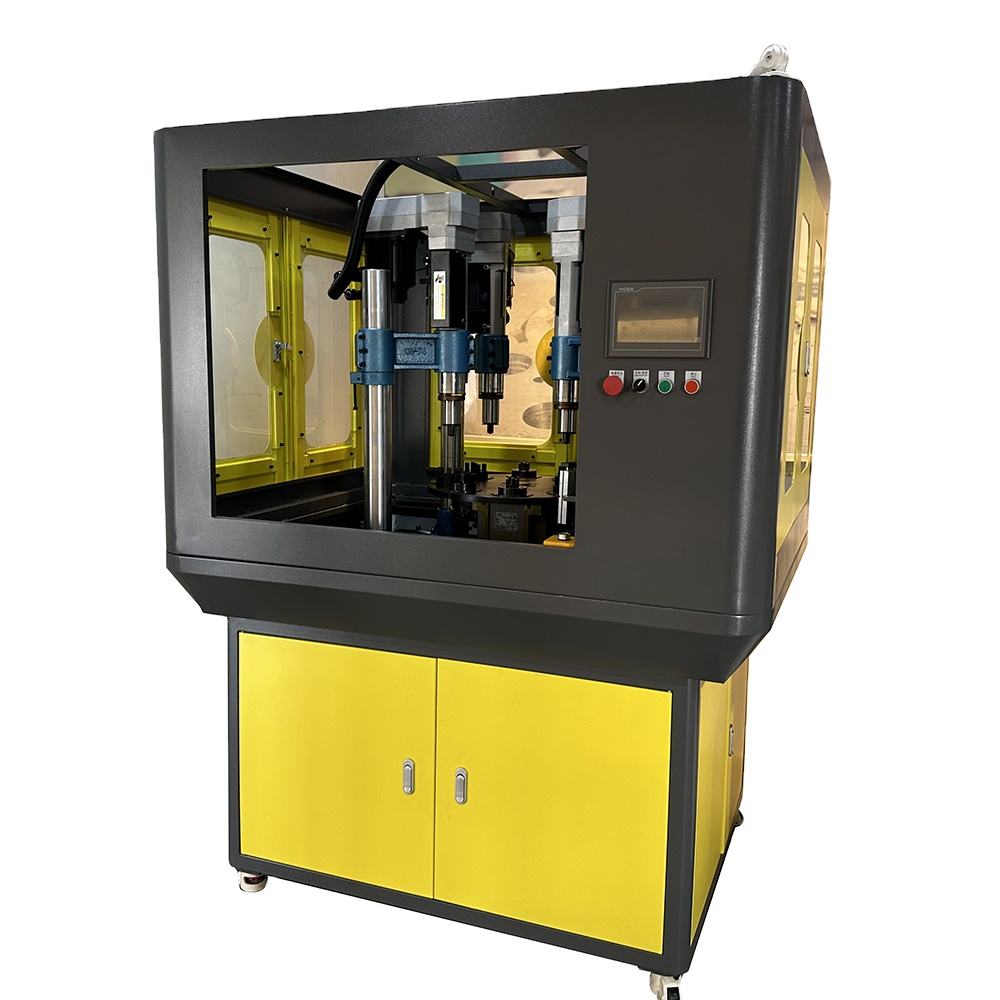In the fast-paced world of manufacturing, efficiency and precision are non-negotiable. Among the tools that make this possible, the Rotary Drilling and Tapping Machine stands out as a cornerstone of modern machining processes. Whether in automotive, aerospace, or electronics industries, this versatile equipment has revolutionized how holes are drilled and threads are created in metal, plastic, and composite materials. Let’s explore its functions, benefits, and applications.
What Is a Rotary Drilling and Tapping Machine?
A rotary drilling and tapping machine is a specialized piece of equipment designed to perform two critical operations in a single setup: drilling holes and cutting internal threads (tapping). Unlike traditional methods that require separate machines or manual tool changes, this machine combines both processes seamlessly. Its rotary mechanism ensures consistent alignment, while automated controls enable high-speed, repeatable operations.
Key Features and Advantages
- Dual-Function Capability
By integrating drilling and tapping into one workflow, the machine eliminates downtime caused by switching tools. This boosts productivity, especially in high-volume production environments. - Precision Engineering
Advanced models use CNC (Computer Numerical Control) systems to achieve micron-level accuracy. This ensures uniformity across batches, reducing errors and material waste. - Versatility
These machines can handle a wide range of materials, from soft aluminum to hardened steel, and accommodate various hole sizes and thread types (e.g., metric, UNC, or custom profiles). - Cost-Effectiveness
Reduced labor costs, faster cycle times, and minimal tool wear translate to long-term savings for manufacturers. - Automation Compatibility
Many modern rotary drilling and tapping machines are designed for integration into automated production lines, supporting Industry 4.0 initiatives.
Applications Across Industries
- Automotive: Drilling and threading engine components, brake systems, or transmission parts.
- Aerospace: Creating precise holes and threads in turbine blades, fuselage panels, and landing gear.
- Electronics: Manufacturing enclosures, heat sinks, or connectors with tight tolerances.
- Energy: Producing threaded fittings for pipelines, valves, and renewable energy equipment.
Choosing the Right Machine
When selecting a rotary drilling and tapping machine, consider the following factors:
- Material Type: Ensure the machine’s power and torque match the hardness of your workpieces.
- Production Volume: High-speed CNC models are ideal for mass production, while manual or semi-automatic options suit smaller batches.
- Thread Specifications: Verify compatibility with required thread sizes and standards.
- Automation Needs: Look for features like automatic tool changers or robotic integration if streamlining workflows is a priority.
The Future of Drilling and Tapping
As manufacturing evolves, so does the technology behind these machines. Innovations such as IoT-enabled sensors, AI-driven predictive maintenance, and hybrid machines capable of multitasking (e.g., combining milling and tapping) are pushing the boundaries of what’s possible. These advancements promise even greater precision, speed, and adaptability for industries worldwide.
Conclusion
The rotary drilling and tapping machine is more than just a tool—it’s a catalyst for productivity in modern manufacturing. By merging two essential processes into a single, efficient operation, it empowers businesses to meet tight deadlines, maintain quality standards, and stay competitive. For any manufacturer looking to optimize their machining workflow, investing in this technology is a step toward future-proofing their operations.

